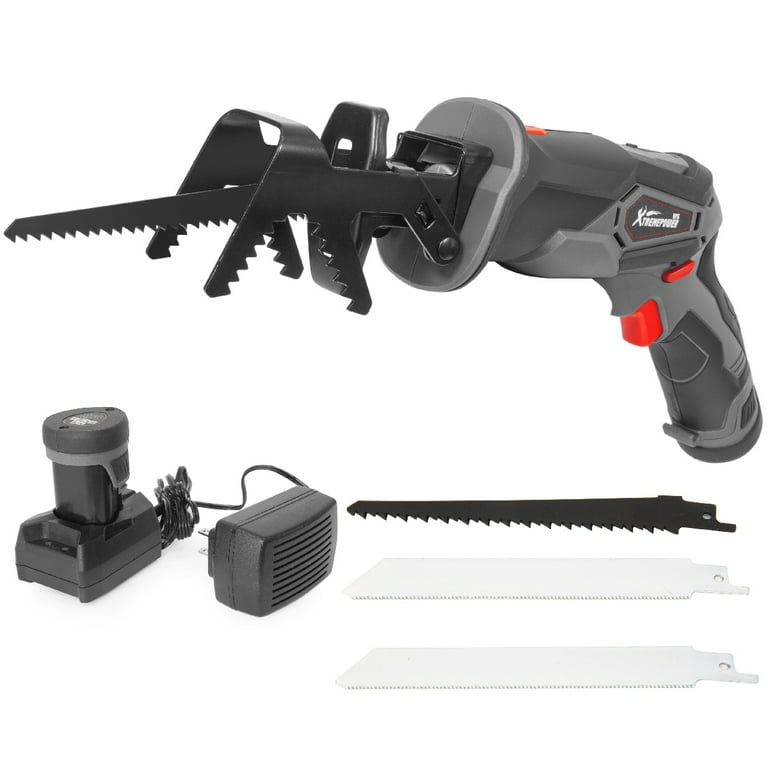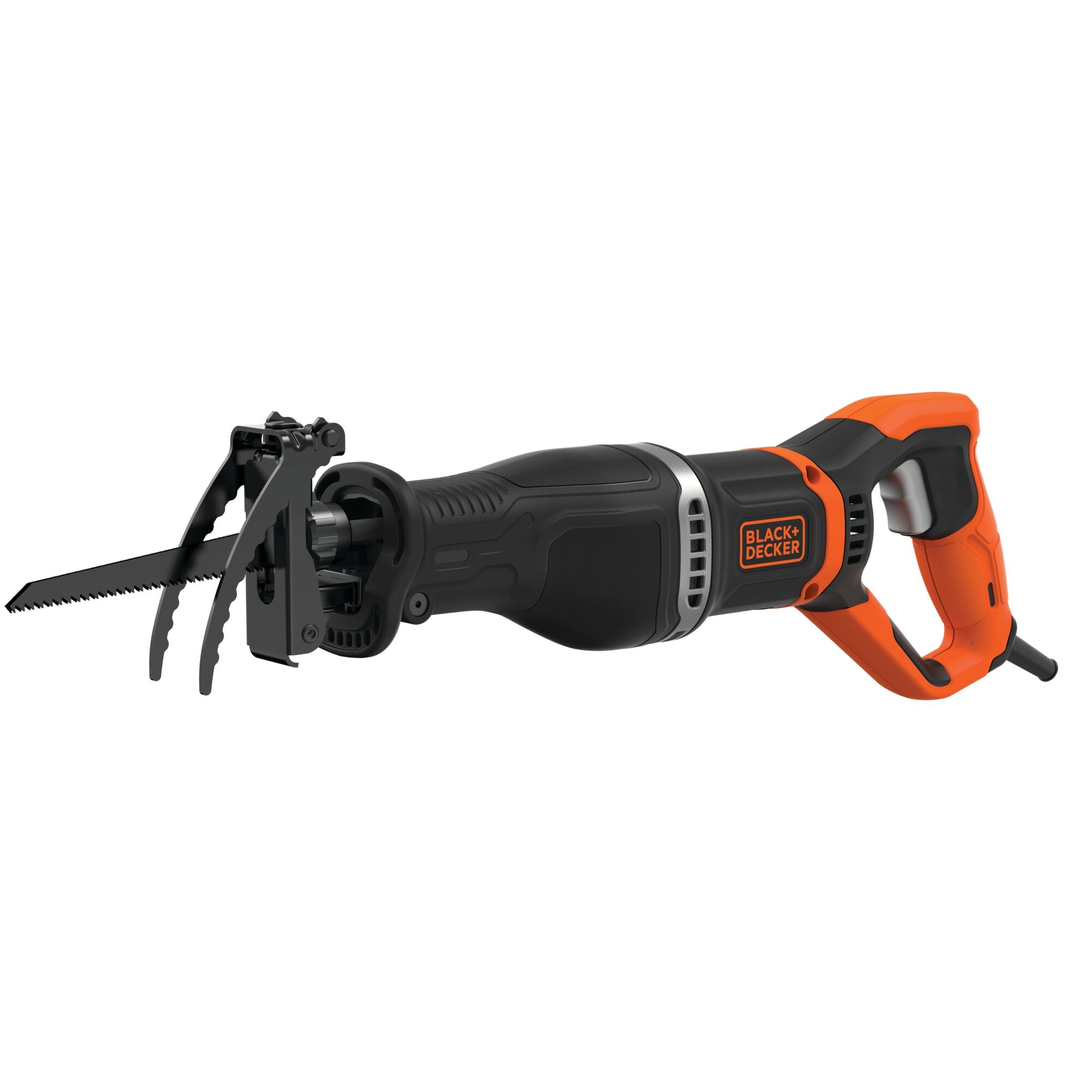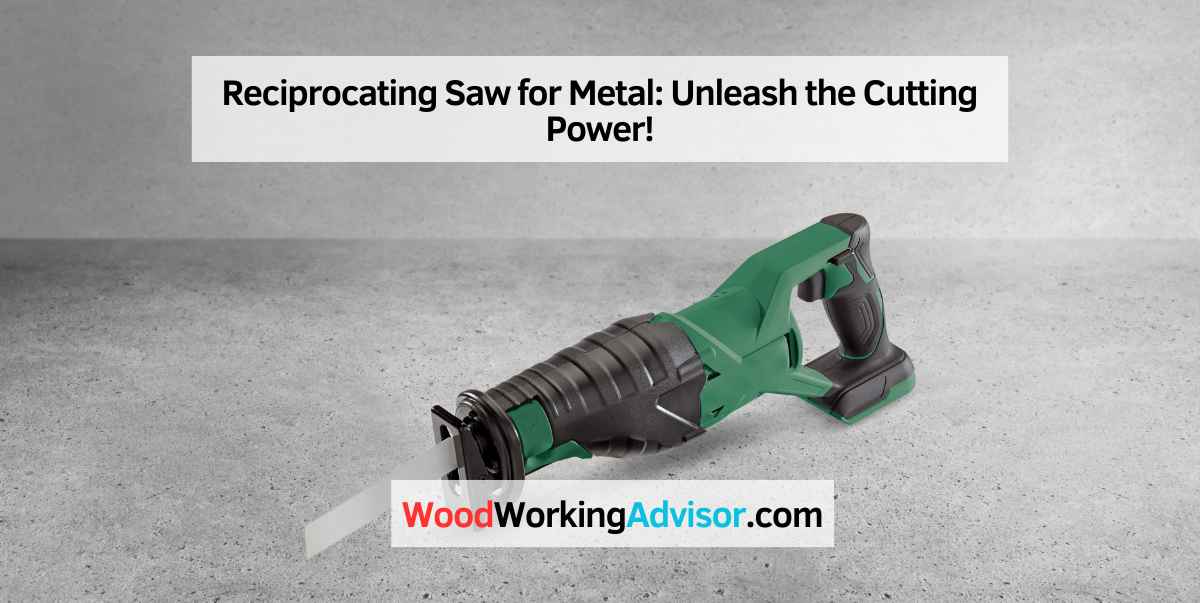A reciprocating saw for metal is a versatile and powerful tool that efficiently cuts through metal materials. It is known for its precision and ease of use in metal fabrication projects.
When it comes to metalworking, having the right tools is crucial for achieving precise and efficient results. One such tool that stands out is the reciprocating saw for metal. This powerful tool is designed to effortlessly cut through various types of metal materials with precision and accuracy.
Whether you are working on a DIY project or a professional metal fabrication task, a reciprocating saw for metal can be a valuable addition to your toolkit. Its ability to handle tough and thick metals makes it a preferred choice among metalworkers and DIY enthusiasts alike. Additionally, the ergonomic design and ease of operation make it a user-friendly tool for both beginners and experienced craftsmen.
The Versatile Reciprocating Saw
The reciprocating saw is a versatile tool that offers numerous benefits for cutting metal. Let’s explore its capabilities and features that make it a must-have in every toolbox.
Metal Cutting Capabilities
The reciprocating saw excels in cutting various metals such as steel, aluminum, and copper with precision and efficiency.
- Capable of handling different thicknesses of metal sheets effortlessly.
- Perfect for cutting through metal pipes, rods, and metal studs.
- Allows for both straight cuts and intricate shapes in metal fabrication projects.
Variable Speed Control
The adjustable speed settings of the reciprocating saw provide enhanced control and accuracy for metal cutting tasks.
- High speed for quick cuts through thin metal sheets.
- Low speed for meticulous cutting of thick metals without overheating.
- Variable speed trigger for seamless transitions between different metal cutting applications.
Choosing The Right Blade
When it comes to using a reciprocating saw for metal, selecting the right blade is crucial. The quality of the blade directly affects the efficiency and precision of your cuts. Each type of blade has specific characteristics that make it suitable for different metal cutting tasks.
Bimetal Blades
Bi-metal blades are versatile and can cut through various types of metal. They are made of two different metals bonded together, typically HSS and HCS, combining durability and flexibility.
Carbide-tipped Blades
Carbide-tipped blades are known for their exceptional hardness and durability. These blades are suitable for cutting harder metals such as stainless steel and cast iron, offering long-lasting performance.
Optimizing Cutting Performance
When it comes to optimizing cutting performance for metal with a reciprocating saw, understanding the key techniques and factors can make a significant difference. Proper blade installation and utilizing orbital action are essential to achieving precise and efficient cuts. By mastering these aspects, you can enhance the productivity and quality of your metal cutting tasks.
Proper Blade Installation
Ensuring that the blade is installed correctly is crucial for optimized cutting performance. When mounting the blade, make sure it is securely and firmly attached to the saw. Confirm that the teeth are facing in the right direction to achieve efficient cutting and to prevent any potential accidents. During the installation process, remember to handle the blade carefully to avoid any injuries.
Utilizing Orbital Action
Employing orbital action can significantly enhance the cutting efficiency for metal with a reciprocating saw. By making use of this feature, you can adjust the blade motion, allowing for more aggressive and faster cuts. This is particularly beneficial for cutting thicker metal pieces or materials with diverse hardness. Using orbital action intelligently can lead to smoother cuts and reduced effort.

Credit: www.amazon.com
Safety Measures
When using a reciprocating saw for metal, safety should always be a top priority. This powerful tool can make quick work of tough materials, but it also poses certain risks. By following these safety measures, you can ensure a safe and accident-free work environment.
Protective Gear
Wearing the right protective gear is essential when using a reciprocating saw for metal. This gear not only protects you from flying debris but also helps minimize the risk of injury. Here are some key protective gear items to consider:
- Safety glasses or goggles: These protect your eyes from sparks, metal shavings, and other debris.
- Ear protection: Reciprocating saws can be loud, so wearing earplugs or earmuffs is crucial to prevent hearing damage.
- Gloves: Sturdy gloves provide grip and protect your hands from sharp edges, vibrations, and heat.
- Dust mask: When working with metal, wearing a dust mask can shield you from harmful particles and fumes.
- Protective clothing: Long sleeves, pants, and steel-toed boots offer an extra layer of protection against sparks and accidental cuts.
Secure Workpiece Clamping
Properly securing the workpiece before cutting is crucial for your safety. Inadequate clamping can cause the material to move during cutting, leading to accidents. Follow these steps to ensure secure workpiece clamping:
- Inspect your work surface: Ensure that the surface is stable and can withstand the force of the reciprocating saw.
- Use a workbench or sturdy table: Place your workpiece on a stable surface that is at a comfortable working height.
- Clamp the workpiece: Use appropriate clamps or vises to secure the material firmly in place. This prevents movement and reduces the risk of injuries.
- Position the workpiece correctly: Make sure the area you plan to cut is accessible and clear from any obstructions.
By taking these safety measures seriously, you can use a reciprocating saw for metal with confidence, ensuring both your safety and the success of your project.
Maintenance Tips
Proper maintenance of your reciprocating saw for metal is essential to ensure its optimal performance and longevity. By taking a few simple steps, you can keep your tool in top shape and prevent any issues that may arise from neglect. In this section, we will discuss two key aspects of maintenance for your reciprocating saw: blade inspection and replacement, and cleaning and lubrication.
Blade Inspection And Replacement
To ensure safe and efficient cutting, it’s important to regularly inspect your reciprocating saw blade. Over time, blades can become worn, bent, or damaged, leading to reduced cutting efficiency and potential safety hazards. Follow these steps to inspect and replace your reciprocating saw blade:
- Visually examine the blade for any signs of wear, such as dullness, missing teeth, or bent edges.
- If the blade shows signs of damage, or if you have been using it for an extended period, it’s best to replace it with a new one.
- When replacing the blade, ensure that it is compatible with your reciprocating saw’s model and intended for metal cutting.
- Follow the manufacturer’s instructions to safely remove the old blade and install the new one, taking care to securely tighten it.
Cleaning And Lubrication
Cleaning and lubricating your reciprocating saw regularly can help prevent the build-up of debris and promote smoother operation. Here are some tips to keep your saw clean and well-lubricated:
- After each use, remove any metal chips, dust, or other debris from the saw, ensuring that it is powered off and disconnected from the power source.
- Use a soft brush or compressed air to gently clean the blade, housing, and any other exposed areas of the saw.
- Apply a few drops of lubricating oil to the blade and the moving parts of the saw, such as the blade clamp and pivot points.
- Wipe off any excess oil with a clean cloth to avoid attracting more debris.
By regularly inspecting and replacing your reciprocating saw blade as needed, as well as keeping your saw clean and properly lubricated, you can ensure that it remains in optimal working condition. Taking these maintenance steps will not only extend the life of your tool but also enhance your cutting experience and help you achieve precise results.

Credit: www.walmart.com

Credit: www.blackanddecker.com
Frequently Asked Questions For Reciprocating Saw For Metal
What Is A Reciprocating Saw?
A reciprocating saw is a powerful cutting tool used for cutting through various materials, including metal. It features a blade that moves back and forth in a pushing and pulling motion, making it ideal for making both straight and curved cuts.
How Does A Reciprocating Saw Work?
A reciprocating saw operates by utilizing a motor that powers the back-and-forth movement of the blade. As the blade moves in a sawing motion, it cuts through the material with ease. This sawing action, combined with the right blade, allows for efficient cutting of metal and other materials.
What Are The Advantages Of Using A Reciprocating Saw For Metal?
Using a reciprocating saw for metal offers several benefits. Firstly, it provides versatility in cutting different shapes and sizes of metal. Additionally, it allows for faster cutting and can handle thicker metal sheets. The ability to change blades easily also makes it a convenient tool for different cutting tasks.
Can A Reciprocating Saw Cut Through Thick Metal?
Yes, a reciprocating saw is capable of cutting through thick metal. By using the appropriate blade designed specifically for metal cutting, a reciprocating saw can effortlessly slice through thicker metal sheets, pipes, or bars. This makes it an excellent tool for demolition, construction, and metalworking applications.
Conclusion
In the end, a reciprocating saw is a valuable tool for cutting metal. Its versatility and power make it a must-have for any metalworking project. The right blade and proper technique will ensure clean and precise cuts, making your tasks more manageable.
With the right knowledge, a reciprocating saw can be a game-changer for your metal cutting needs.


